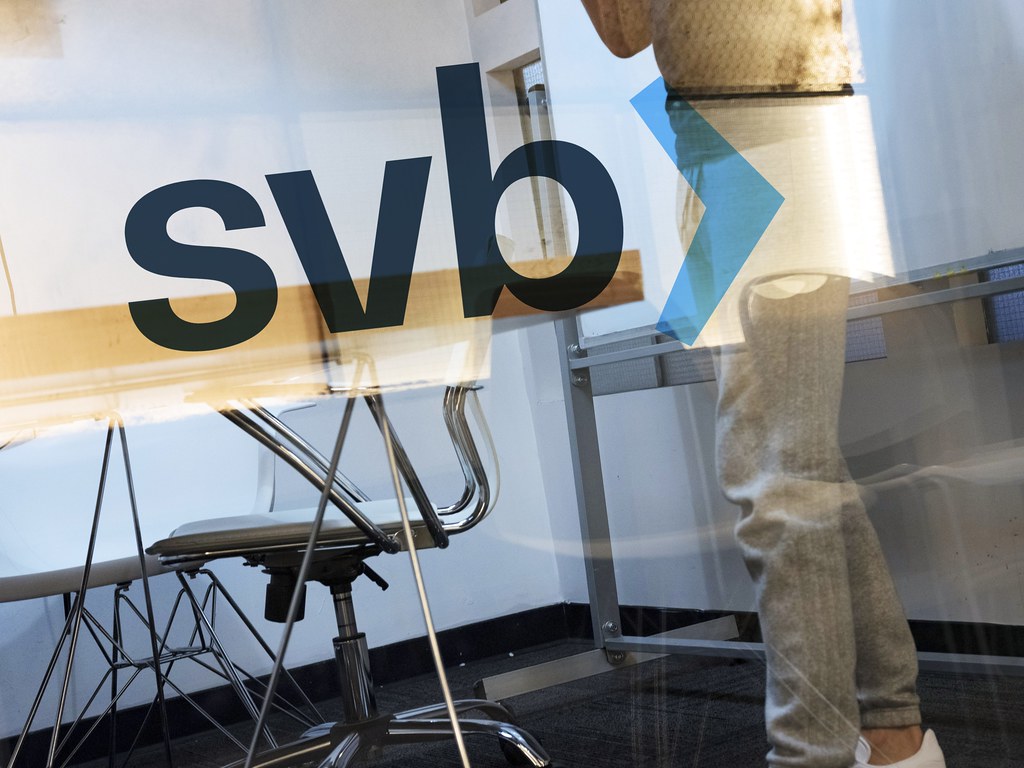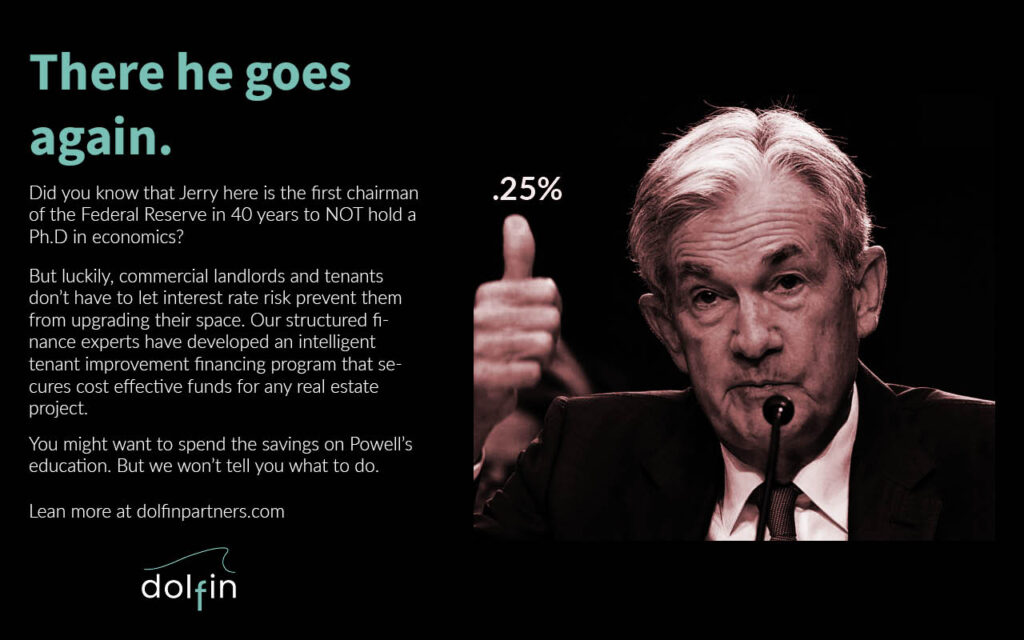Navigating the Commercial Real Estate Market: Opportunities, Challenges, and the Growing Need for Tenant Improvement Financing
March 31, 2023

The commercial real estate market is currently facing a period of unprecedented uncertainty. As traditional demand drivers for office space diminish and cheap money dries up, opportunities and challenges arise for investors, developers, tenants, and landlords alike. In this article, we explore the current state of the commercial real estate market, the impact of recent events on property values and loan performance, and the growing importance of tenant improvement financing as a crucial tool for both tenants and landlords in these uncertain times.
The Current State of the Commercial Real Estate Market
The reduced demand for office space is a significant factor in the changing landscape of the commercial real estate market. With employees spending 25-35% less time in the office today than before the pandemic, there has been a 15% reduction in office space demand per employee. This trend has been exacerbated by the reality that cheap money is disappearing, with an estimated $450 billion of loans coming due in each of the next four years.
Despite these challenges, specific market sectors are demonstrating resilience and growth. For example, New York City’s commercial real estate market has experienced a 26% increase in Colliers Manhattan office leasing volume to 9.23 million square feet. Industrial leasing activity has also surpassed expectations, with year-to-date volume reaching 2.3 million square feet—44.9% higher than all of 2021 combined. Furthermore, the luxury retail sector is expanding in Manhattan, with brands such as Givenchy, Hermès, and Gucci securing new retail spaces.
However, the commercial real estate market has its risks. Market uncertainty has led many investors to pause investments and wait for a correction, while rising interest rates have resulted in seven rate increases in 2022 alone. These rate hikes have made older, low-coupon commercial real estate loans less attractive, contributing to the recent collapse of Silicon Valley Bank and sparking a debate over the actual value of older loans on commercial properties.

The Impact of Recent Events on Property Values and Loan Performance
Silicon Valley Bank’s collapse has spotlighted the potential losses lurking at banks from trillions of dollars in commercial real estate loans on their books. The sale of $72 billion in assets from the failed bank by regulators at a $16.5 billion discount, which pencils out to about 77 cents on the dollar, offers a glimpse into a new clearing price for commercial real estate loans.
This event has led to increased scrutiny of the estimated $5.5 trillion commercial property market as industry experts and investors attempt to determine the actual value of loans on commercial properties in a post-pandemic world. The lack of transparency in the loan market further complicates this process, as loans do not sell transparently like stocks or bonds.
In the reeling office sector, the value of older office buildings in Manhattan could tumble 70%, according to Stijn Van Nieuwerburgh, a real estate and finance professor at Columbia University’s business school. He attributes 40% of this decline to interest rates alone, with remote work, current regulations, and other pressures on the office-building market also contributing to the value drop.
The recent bank failures have made it more difficult for banks to “sweep it all under the rug,” which likely means more loan sales by banks. Jack Mullen, founder of Summer Street Advisors, a commercial real estate advisory firm that’s been involved in multibillion-dollar workouts, states, “People are not going to let it carry into next year. On the regulatory side, it’s coming right to the front of the line. People are super mindful of it.”
The Growing Need for Tenant Improvement Financing
In this environment of heightened risk and market volatility, tenant improvement financing has become a crucial tool for commercial tenants and landlords. Tenant improvement financing allows landlords to offer competitive leasing terms and accommodate tenant needs while tenants can secure cost-effective solutions to customize their spaces. Dolfin, a leading provider of tenant improvement financing, is poised to help commercial tenants and landlords navigate the complexities of the current commercial real estate market.
Why Tenant Improvement Financing Matters
Tenant improvement financing is critical as businesses adapt to new working models and evolving tenant demands. Remote work and hybrid working arrangements have increased demand for flexible office spaces and amenities catering to the modern workforce. Tenant improvement financing can help landlords meet these evolving needs and maintain their competitive edge in the market.
For tenants, securing financing for improvements allows them to create spaces tailored to their specific requirements, enhancing productivity and employee satisfaction. Additionally, tenant improvement financing can help businesses minimize upfront capital expenditures, freeing up valuable resources for other essential operations.

Opportunities Amidst Challenges in the Commercial Real Estate Market
Despite the challenges the commercial real estate market faces, there are still opportunities for investors willing to embrace risk, particularly in the industrial real estate and data center sectors. These sectors have proven resilient in market uncertainty, offering attractive investment prospects.
The hotel sector is also expected to recover from pandemic restrictions as global travel rebounds. Office occupancy may temporarily increase by 10% as employers demand workers to return to their desks. Still, this phenomenon may be short-lived due to the continued popularity of remote work. The persistent housing shortage and high demand for suburban homes will continue to attract investment in the multifamily sector, offering potential growth opportunities for investors.
Dolfin: Your Partner in Tenant Improvement Financing
In the face of these challenges and opportunities, commercial tenants and landlords need to have access to reliable tenant improvement financing options. Dolfin is committed to providing cost-effective tenant improvement financing solutions, helping clients navigate the commercial real estate market during these uncertain times.
Our team of experts is dedicated to guiding you through the financing process, ensuring your investment in commercial real estate remains secure and profitable in this ever-changing market. By partnering with Dolfin, you can leverage our extensive industry knowledge and experience to maximize the value of your commercial property and seize the opportunities presented by the current market landscape.
Conclusion
As the commercial real estate market continues to evolve in response to the challenges posed by the pandemic and shifting economic conditions, tenant improvement financing will play a critical role in helping tenants and landlords adapt and thrive. By partnering with Dolfin, you can access the financing solutions necessary to navigate the market’s uncertainties and capitalize on the opportunities that lie ahead.
If you are interested in tenant improvement financing, don’t hesitate to contact us. Our team of experts is ready to guide you through the process, ensuring your investment in commercial real estate remains secure and profitable in this ever-changing market.
Reach out to us today, and let us help you make the most of the opportunities and overcome the challenges of the current commercial real estate landscape.
Want to stay up to date with dolfin. Follow us on LinkedIn




